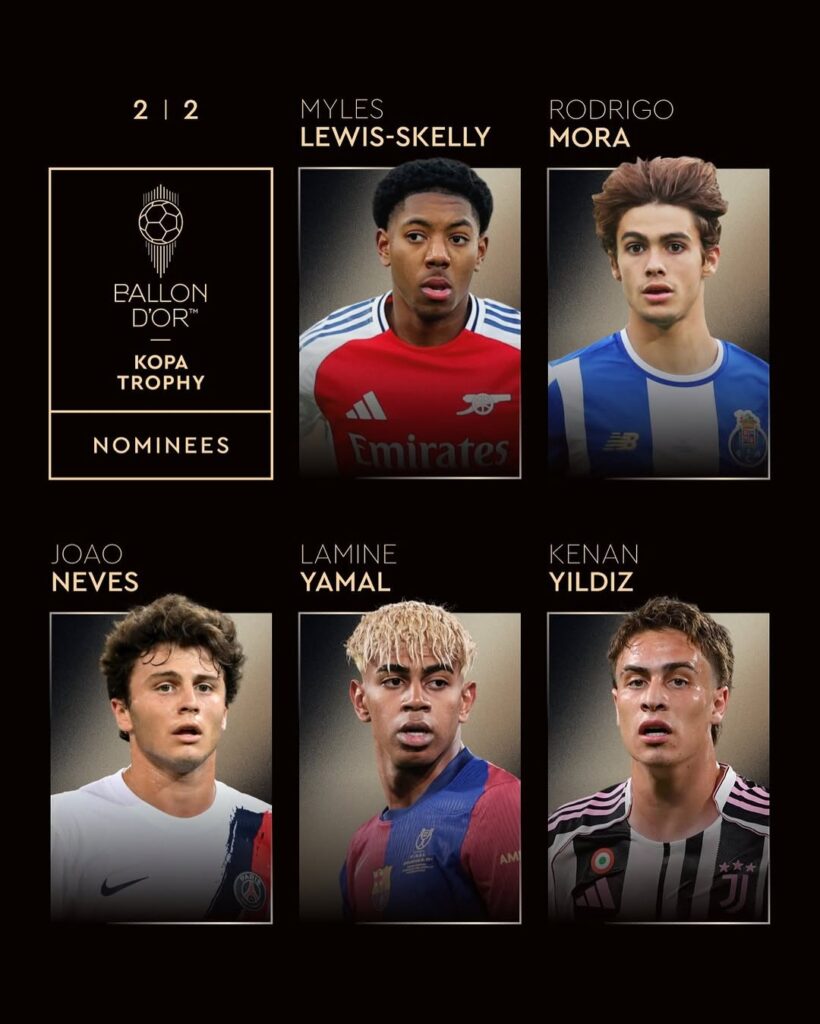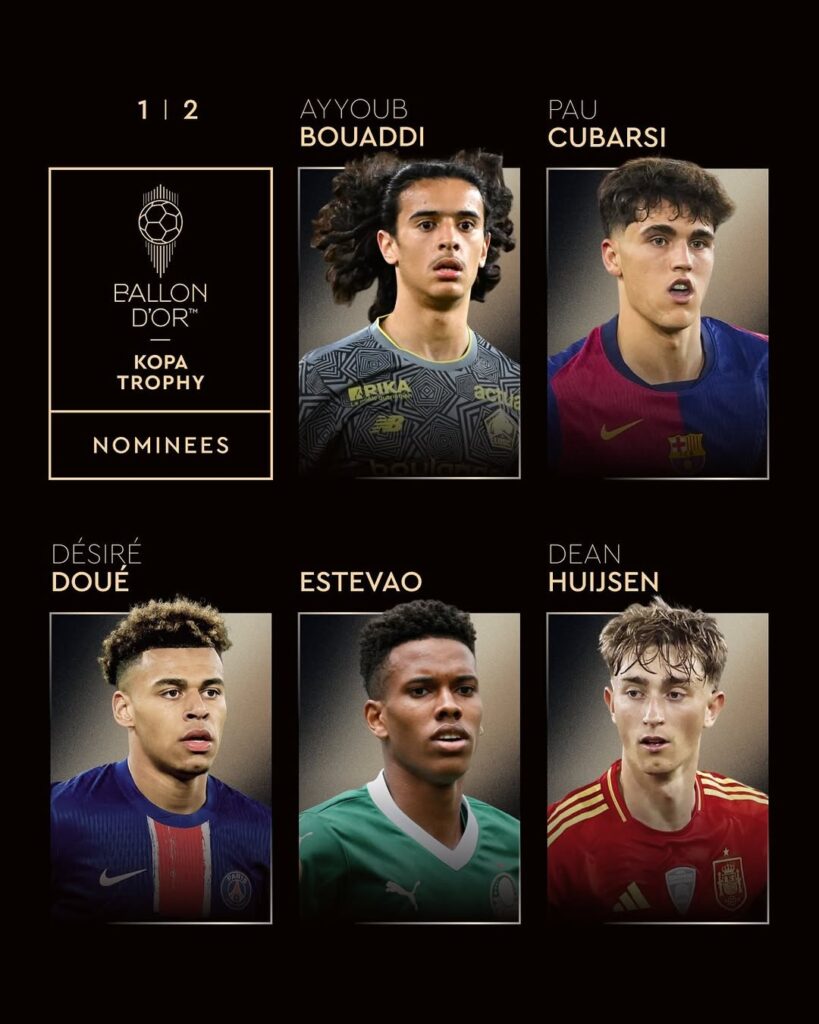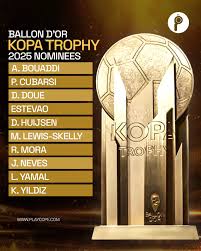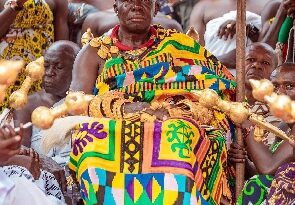Next in Line: The Rising Generation Vying for Football’s Kopa Trophy in 2025


From Barcelona’s teenage prodigies to Brazil’s next big thing, this year’s Kopa Trophy shortlist is a vibrant portrait of football’s emerging elite. Here’s what their rise says about the sport’s future
Every so often, football pauses its noisy pageantry to spotlight the raw, unfinished brilliance of its youngest artists. The Kopa Trophy, now a familiar fixture at the annual Ballon d’Or gala, is that pause — a nod to tomorrow, even as the spotlight still shines on the icons of today.
As the football world gathers in Paris on September 22, 2025, for the 69th Ballon d’Or ceremony, the buzz around who will lift the Kopa Trophy is anything but secondary. If anything, it’s the category most scouts, analysts, and fans watch with an extra degree of interest — not for what the winners are, but what they might become.
This year’s shortlist offers more than hype. It’s a ten-player snapshot of where football is headed — geographically, tactically, and generationally.
Some players already carry the weight of a nation’s hopes, like Lamine Yamal, Barcelona’s gifted forward. At just 18, his blend of technical flair and footballing intuition already defies his age. Spain may have found its next talisman.
And then there’s Myles Lewis-Skelly, Arsenal’s diamond in the making. Not just versatile — switching from midfield to fullback without missing a beat — but impactful. His goal on debut for England in a World Cup qualifier against Albania announced him to the world stage with purpose, not noise.
Portugal, ever a cradle for attacking talent, has Rodrigo Mora — a winger creating shockwaves at Porto — and Joao Neves, now donning Paris Saint-Germain’s colors and dictating midfield tempo with elegance. Neves, slightly older at 20, plays like he’s already logged a decade of top-flight experience.
France, meanwhile, boasts two players on the list: Désiré Doué and Ayyoub Bouaddi. One a lightning bolt in attack, the other a composed force in midfield. Both represent a growing trend in French football: nurturing versatile, tactically mature youngsters who can slot into multiple systems.
Pau Cubarsi, Barcelona’s teenage centre-back, is already being compared to the calm distributors of Spain’s past golden generation. Meanwhile, Kenan Yildiz at Juventus and Dean Huijsen now at Bournemouth show how youth talent is no longer confined to elite clubs. Even mid-table teams can become springboards to global stardom.
Then comes Estevao, the Brazilian wonderkid turning heads at Palmeiras. South American football has always supplied the magic, and Estevao — creative, fearless, and relentless — is the latest in that lineage.
Collectively, these players challenge the idea that greatness needs time. Their impact is immediate, their maturity startling.
So as the Théâtre du Châtelet lights up on that late September evening, the football world won’t just be looking at who wins what. It’ll be taking stock of something far more enduring — the generational shift quietly unfolding beneath the surface.
After all, the future doesn’t announce itself with certainty. It tiptoes in — sometimes wearing the boots of an 18-year-old with a daring run, a well-timed tackle, or a first touch that makes you believe in magic again.




